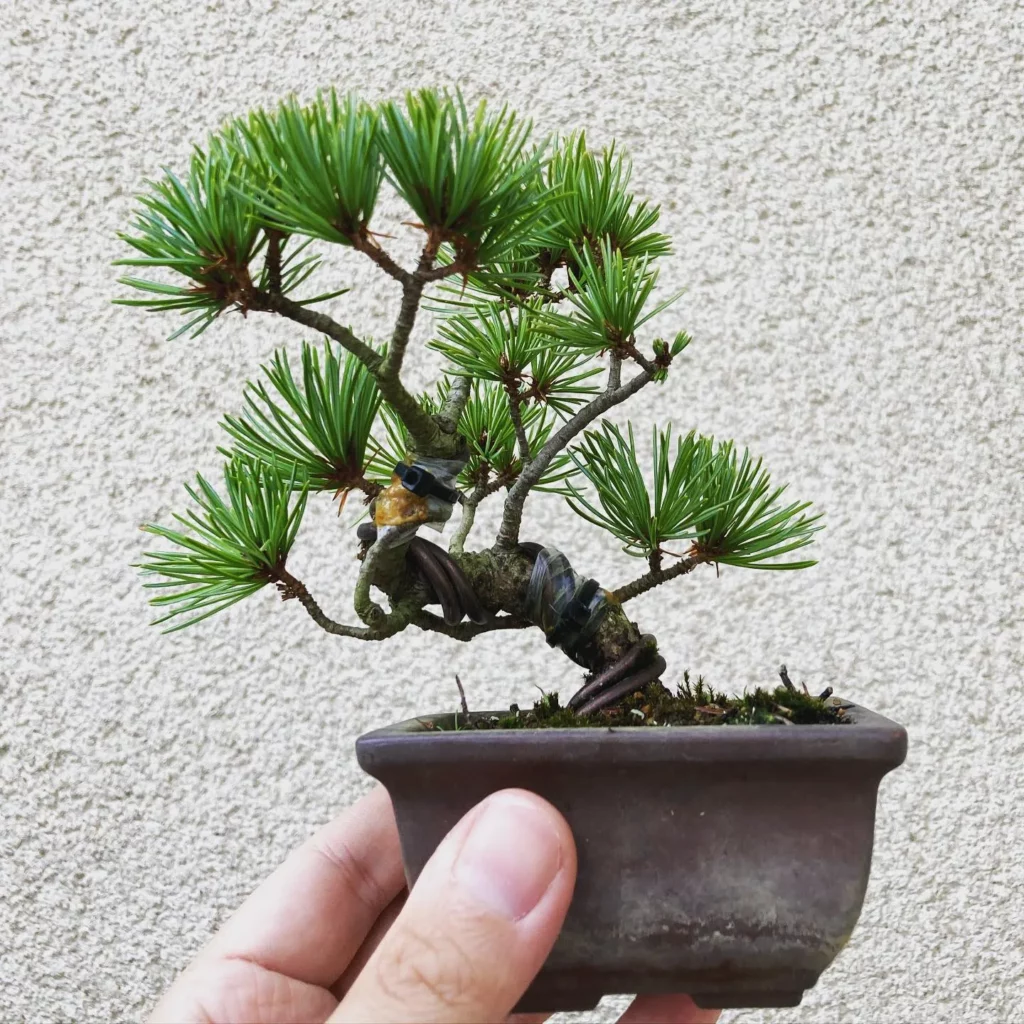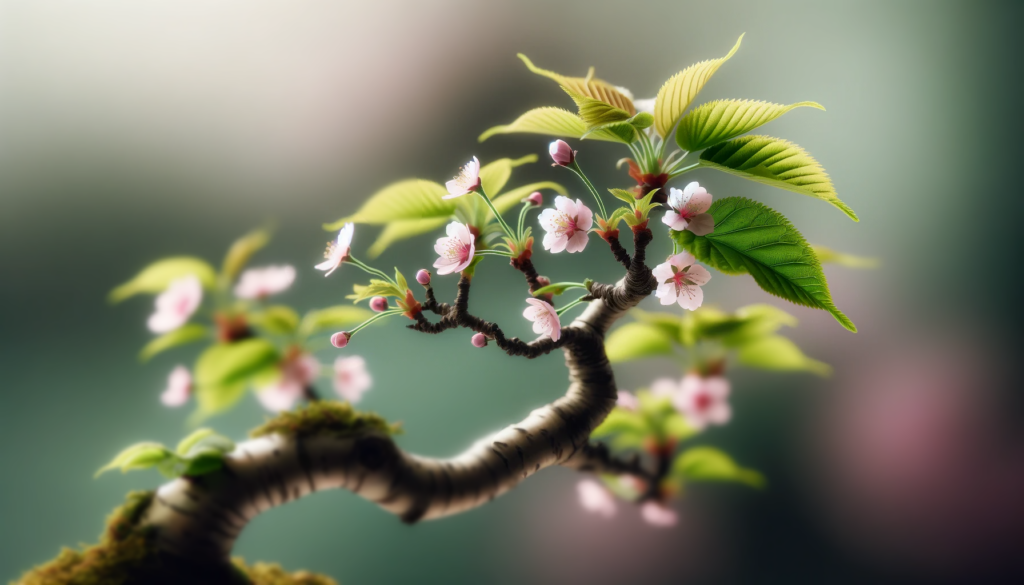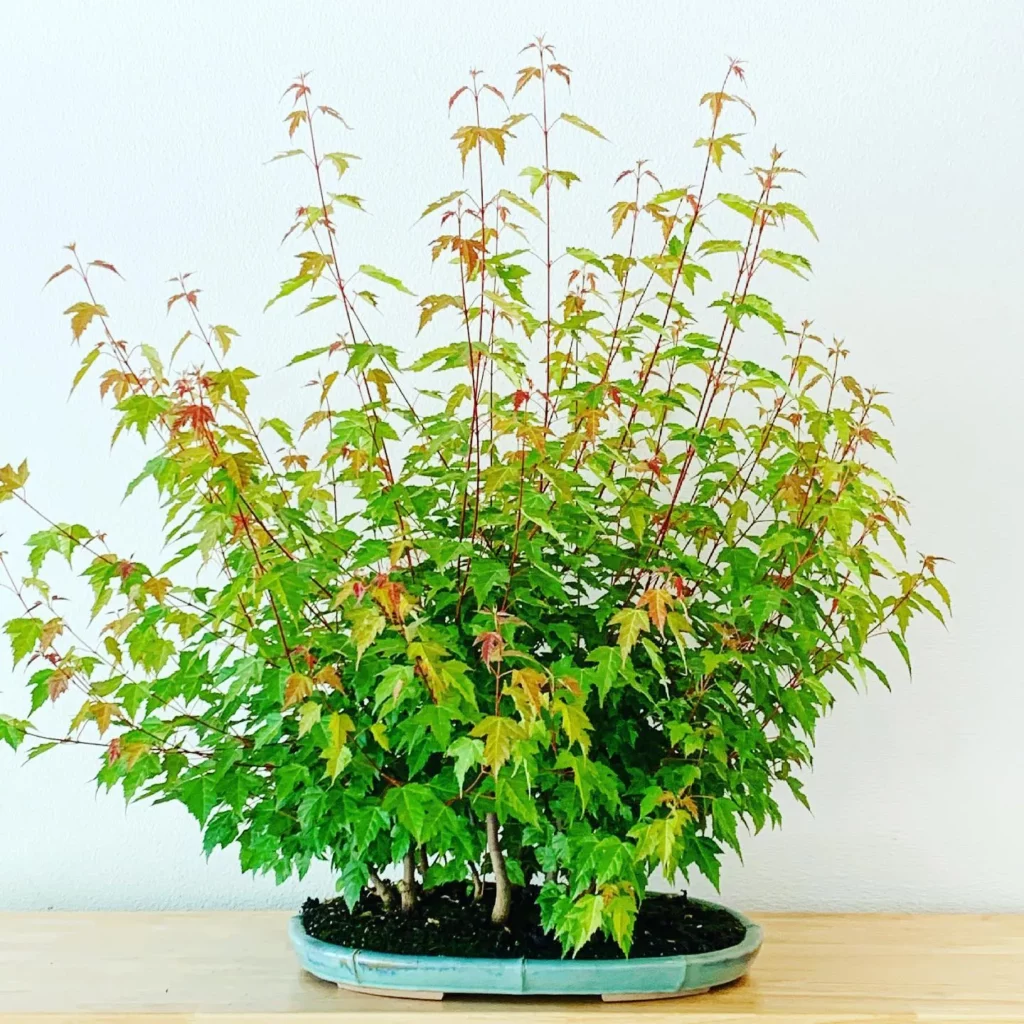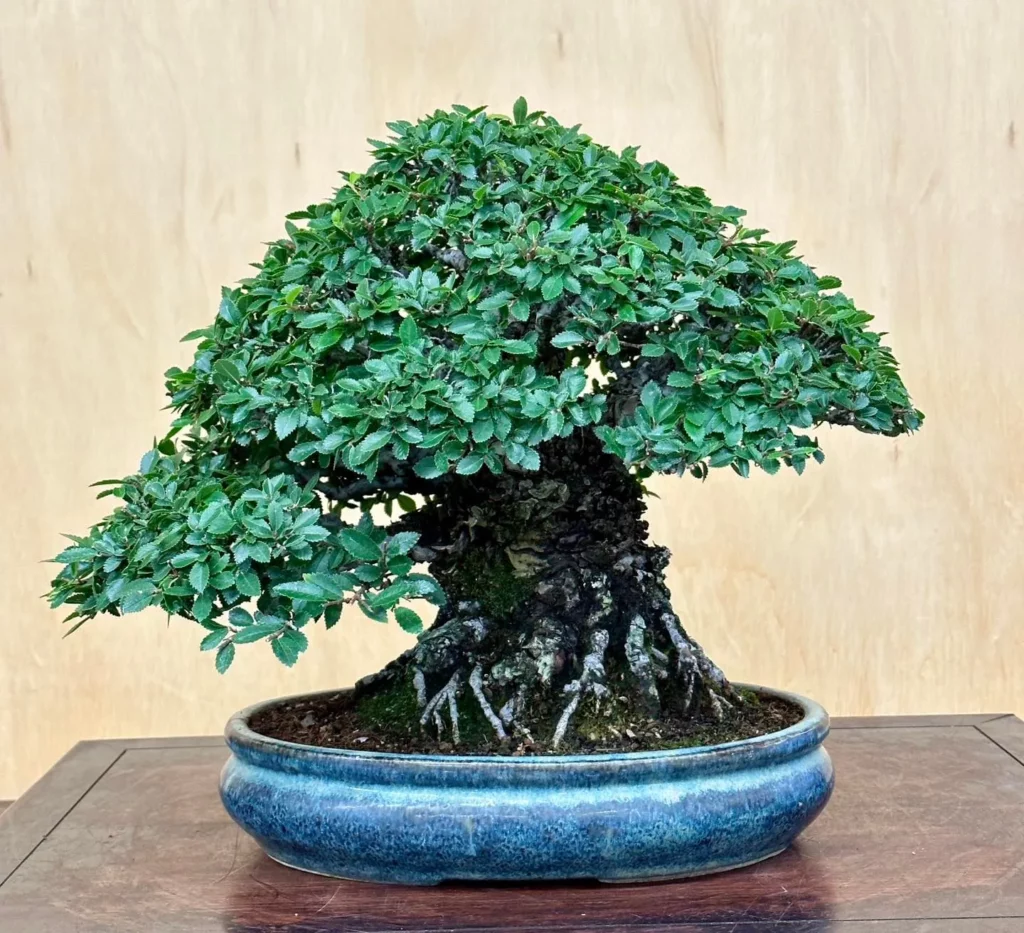Native to tropical African countries and found in many parts of South Asia, Tamarind Bonsai Trees are valued not only for their shade and edible fruit but also for their exquisite form and evergreen foliage. With their dome-shaped structure, weeping branches, and vibrant green leaves, these trees are a visual delight. Their mature pods have a distinct sweet and sour taste, which makes them a favored ingredient in various cuisines around the world.
Characteristics of Tamarind Bonsai Trees



Tamarind Bonsai Trees possess several distinctive characteristics that make them a fascinating choice for bonsai cultivation. These trees have a captivating dome-shaped form, with weeping branches that add an elegant touch to their overall appearance.
The foliage of tamarind bonsai trees is evergreen, exhibiting bright green leaves that are pinnate in shape. The leaves are composed of small leaflets, which close at night, adding a dynamic element to the tree’s aesthetic appeal.
While the flowers of the tamarind tree may be inconspicuous in appearance, they hold their own charm. These flowers are approximately an inch wide and showcase vibrant shades of yellow, often accented with orange or red streaks.
Furthermore, tamarind bonsai trees are known for their longevity and slow growth rate, making them highly suitable for bonsai cultivation. Their long-lasting nature allows enthusiasts to enjoy the beauty of these trees for many years to come.
Propagation of Tamarind Bonsai Trees



The propagation of tamarind bonsai trees primarily involves germinating mature seeds, which is the preferred method. To prepare the seeds for germination, soak them in warm water overnight to soften the seed coats and enhance germination. You can then plant the seeds directly into potting soil or bonsai soil, ensuring they are planted about half an inch deep.
Germination typically occurs within ten to fifteen days, transforming the seeds into young seedlings ready for further growth. It’s important to note that while stem cuttings and grafting are also possible methods of propagation, germinating mature seeds is the most reliable and commonly used approach for tamarind bonsai trees.
Training and Styling Tamarind Bonsai Trees



Once you have successfully propagated a tamarind bonsai seedling and it has adapted to its new environment, the next step is to begin training and styling the tree to achieve the desired shape and aesthetic appeal.
1. Gradual exposure to direct sunlight: As your tamarind bonsai grows, it is important to gradually expose it to direct sunlight. This will help the tree develop strong branches and vibrant foliage. Start by placing the tree in a location with partial shade and gradually increase the amount of sunlight it receives each day.
2. Pruning and removing unnecessary branches: To maintain the desired shape of your tamarind bonsai, you will need to regularly prune and remove any unnecessary branches or buds. This will help to maintain the overall symmetry and visual appeal of the tree. Carefully assess the growth patterns and remove any branches that disrupt the desired form.
3. Wiring for branch shaping: Wiring is a technique used in bonsai styling to shape the branches according to the artist’s vision. By carefully wrapping wire around the branches, you can gently guide them into the desired position. Ensure that the wire is not too tight to avoid causing damage to the branches.
4. Regular pruning and pinching: Regular pruning and pinching are essential for maintaining the shape and size of your tamarind bonsai. By pruning back the new growth and pinching off excess buds, you can encourage the tree to develop a more compact and refined appearance. Be sure to use clean and sharp pruning tools to minimize the risk of infection.
5. Check and replace potting medium: It is important to regularly check the potting medium of your tamarind bonsai for excess roots. If the roots become overcrowded, it can hinder the tree’s growth and health. Carefully remove the tree from its pot, gently prune any excessive roots, and replace the potting medium with fresh soil enriched with fertilizer.
Care Tips for Tamarind Bonsai Trees



Taking good care of your tamarind bonsai trees is key to ensuring their health and vitality. Here are some essential care tips to help you keep your bonsai thriving:
1. Watering
Water your tamarind bonsai regularly to keep the soil moist. Tamarind trees are sensitive to dry conditions and tend to drop their leaves in such situations. Ensure that the soil is well-drained to prevent waterlogging, as excessive moisture can lead to root rot.
2. Sunlight
Place your tamarind bonsai in a location that receives bright sunlight. These trees thrive in ample light and need at least 4-6 hours of direct sunlight each day. However, be cautious of scorching midday sun during the summer months and provide partial shade if necessary.
3. Soil
Use a well-draining soil mix for your tamarind bonsai. A mixture of bonsai soil, perlite, and organic compost works well. The soil should retain enough moisture for the tree’s roots, but excess water should be able to drain freely. Regularly check the soil’s moisture level and adjust your watering routine accordingly.
4. Fertilization
Fertilize your tamarind bonsai regularly to provide it with the necessary nutrients. Use a balanced liquid fertilizer formulated specifically for bonsai trees. Apply the fertilizer according to the manufacturer’s instructions, typically every 4-6 weeks during the growing season. Fertilization will promote healthy growth and vibrant foliage.
5. Pest and Disease Control
Take preventive measures to protect your tamarind bonsai from pests and diseases. Regularly inspect the leaves and branches for any signs of infestation or damage. Prune off affected areas and apply appropriate organic pest control treatments, if necessary. Maintain good airflow around the tree and ensure proper hygiene and cleanliness in its surroundings.
6. Pruning and Training
Regular pruning is essential to maintain the shape and size of your tamarind bonsai. Trim back excessive growth and unwanted branches to encourage a more compact form. Wiring can be used to shape the branches, but be cautious to avoid damaging the tree. Train your bonsai gradually and be patient, as tamarind bonsai trees are slow-growing.
Symbolism and Cultural Significance of Tamarind Bonsai Trees



In many cultures, the tamarind tree holds great symbolism and cultural significance. For example, in some parts of southern India, it is considered auspicious to have a tamarind tree planted on the southwest side of a house. The tamarind tree is a common sight in rural areas and is revered for its shade and edible fruit.
Furthermore, the tamarind tree has deep connections to traditional medicine and is used for various medicinal purposes. It is believed to have digestive properties and is used to treat stomach ailments. The leaves and bark of the tree are known for their antibacterial and anti-inflammatory properties and are often used in herbal remedies for treating fever, soreness, and dysentery.
The cultural significance of the tamarind bonsai tree goes beyond its practical uses. It represents beauty, endurance, and prosperity, making it a cherished symbol. The bonsai tree, with its carefully crafted form and miniature representation of a full-grown tamarind tree, embodies these qualities.
The Versatility of Tamarind in Culinary Uses

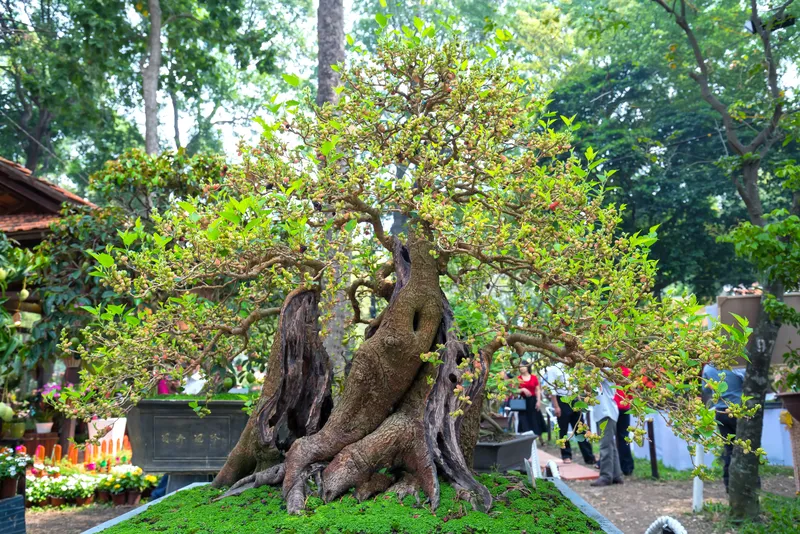
Tamarind pulp, extracted from the mature pods of the tamarind tree, is widely used for its unique flavor in various cuisines. It has a distinctive sweet and sour taste that adds depth to dishes.
Tamarind pulp is often used as a flavoring agent in:
- Chutneys
- Curries
- Stir-fries
- Sauces
It is also a popular pickling agent, providing a tangy and slightly sweet taste to pickled vegetables and fruits.
The versatility of tamarind in culinary applications makes it a prized ingredient in many cultures.
Traditional Medicinal Uses of Tamarind
The tamarind tree, known as Tamarindus Indica, has a long history of use in traditional medicine for its various medicinal properties. Different parts of the tree, including the fruit pulp, leaves, and bark, have been utilized for their therapeutic benefits.
Fruit Pulp
The fruit pulp of tamarind is believed to possess digestive properties and has been traditionally used to treat stomach ailments. It is known for its natural laxative effect, helping to relieve constipation and regulate bowel movements. Consuming tamarind fruit pulp can aid in improving digestion and alleviating digestive discomfort.
Leaves and Bark
The leaves and bark of the tamarind tree are rich in antibacterial and anti-inflammatory compounds. In traditional medicine, they are often incorporated into herbal remedies for various conditions:
- Fever: Tamarind leaves and bark are used to reduce fever symptoms and promote recovery.
- Soreness: The anti-inflammatory properties of tamarind are employed to alleviate soreness and inflammation in the body.
- Dysentery: Tamarind is utilized in the treatment of dysentery, as it possesses antimicrobial properties that help combat the underlying infection.
By harnessing the power of tamarind leaves and bark, traditional medicine aims to support the body’s natural healing processes and promote overall well-being.
Tamarind’s prominence in traditional medicine spans centuries and continues to be valued for its various medicinal purposes around the world.
Conclusion
Tamarind bonsai trees offer a taste of the tropics with their unique beauty and cultural significance. These stunning trees, scientifically known as Tamarindus Indica, bring the allure of tropical bonsai into your home, adding a touch of elegance and charm to any space.
Growing and styling tamarind bonsai trees requires proper propagation techniques, training, and care. By following the right steps and providing regular attention and maintenance, you can transform a tamarind bonsai tree into a breathtaking piece of art.
Whether you choose to enjoy the tamarind bonsai tree for its culinary purposes or its traditional medicinal uses, there’s no denying the special place it holds in the hearts of many. With its distinct sweet and sour taste, the tamarind fruit is a prized ingredient in various cuisines, adding depth and flavor to dishes. Moreover, different parts of the tamarind tree have been used in traditional medicine for centuries, valued for their digestive, antibacterial, and anti-inflammatory properties.
Embrace the beauty and symbolism of the tamarind bonsai tree and bring a taste of the tropics to your home. Experience the joy of cultivating and nurturing this exquisite bonsai tree, and enjoy the rewards it brings in terms of beauty, cultural significance, and the satisfaction of owning a living piece of art.
FAQ
What are the characteristics of tamarind bonsai trees?
Tamarind bonsai trees have a dome-shaped form, weeping branches, small evergreen foliage, bright green pinnate leaves, and inconspicuous yellow flowers with orange or red streaks. The tree is long-lived, slow-growing, and has rough bark.
How can I propagate tamarind bonsai trees?
The preferred method of propagation is through germinating mature seeds. Soak the seeds in warm water overnight before planting them half an inch deep in potting soil or bonsai soil. Germination usually takes place within ten to fifteen days. Other methods include stem cuttings and grafting.
How do I train and style tamarind bonsai trees?
Gradually expose the tree to direct sunlight, remove unnecessary branches and buds, and shape the branches using wiring. Regular pruning and pinching are necessary to maintain the desired shape.
What are the care tips for tamarind bonsai trees?
Tamarind bonsai trees require bright sunlight and regular watering to keep the soil moist. The soil should be well-drained and enriched with fertilizer. Regular fertilization and protection from pests and diseases are also necessary.
What is the symbolism and cultural significance of tamarind bonsai trees?
Tamarind trees are considered auspicious in some cultures and are associated with beauty, endurance, and prosperity. They are also revered for their shade and edible fruit, and used in traditional medicine.
How versatile is tamarind in culinary uses?
Tamarind pulp is widely used for its unique flavor in various cuisines. It is often used as a flavoring agent in chutneys, curries, stir-fries, and sauces. Tamarind is also a popular pickling agent.
What are the traditional medicinal uses of tamarind?
Various parts of the tamarind tree, including the fruit pulp, leaves, and bark, are used in traditional medicine. The fruit pulp aids in digestion, while the leaves and bark have antibacterial and anti-inflammatory properties.

